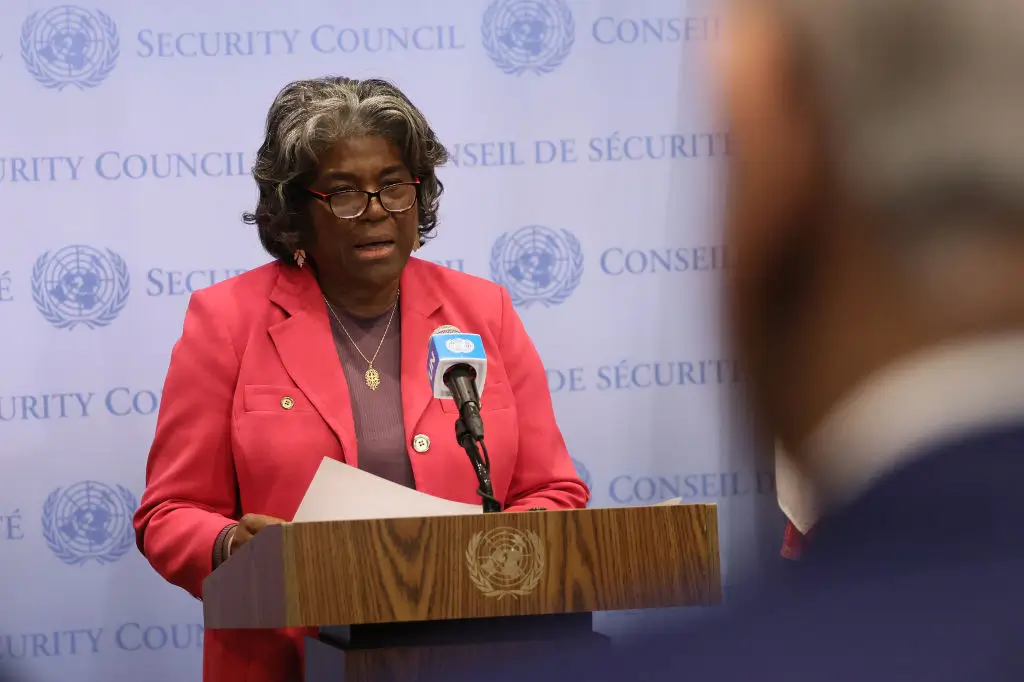On Oct. 18, the United States was the lone member of the United Nations Security Council to vote against condemning civilian violence in Gaza resulting from Israel’s response to Hamas. The face of that veto was the U.S. ambassador to the U.N., Linda Thomas-Greenfield.
On Dec. 9, the United States was the lone member of the UN Security Council to vote against a ceasefire in Gaza. The face of that veto was the U.S. Deputy Ambassador to the U.N., Robert Wood.
The most recent vote on a ceasefire at the U.N. Security Council happened on Feb. 20: 13 countries voted for a ceasefire, the U.K. abstained, and the U.S. voted against it, with Ambassador Thomas-Greenfield casting the no vote for this country.
Both Thomas-Greenfield and Wood are the faces standing between genocide in occupied Palestine and a ceasefire. Both Thomas-Greenfield and Wood are Black. These are the Black faces America wears as Blackface to rationalize its support of the settler colonial state that is Israel.
As the global majority, Black and brown people rebuke Israel for committing genocide in Gaza as well as the United States for being a complicit actor. And the global majority is represented in the Security Council and throughout the many nations who’ve condemned the actions of Israel’s government and military.
When the Black Face Is at Risk of Becoming Blackface
The U.S. has Black representation at the U.N. It may be a coincidence that the ambassadors are Black in this case. However, these officials have a similar hue to “reason” with the global majority that white people do not.
But what is not a coincidence is America’s use of diplomatic Blackface as political cover for supporting white settler colonialism. The definition of Blackface, as we know it, is when a non-Black person (often a white person) paints their face black (traditionally using burnt cork) and engages in stereotypical behavior to mock, demean, and make fun of Black people. The U.S. is…
Read the full article here





